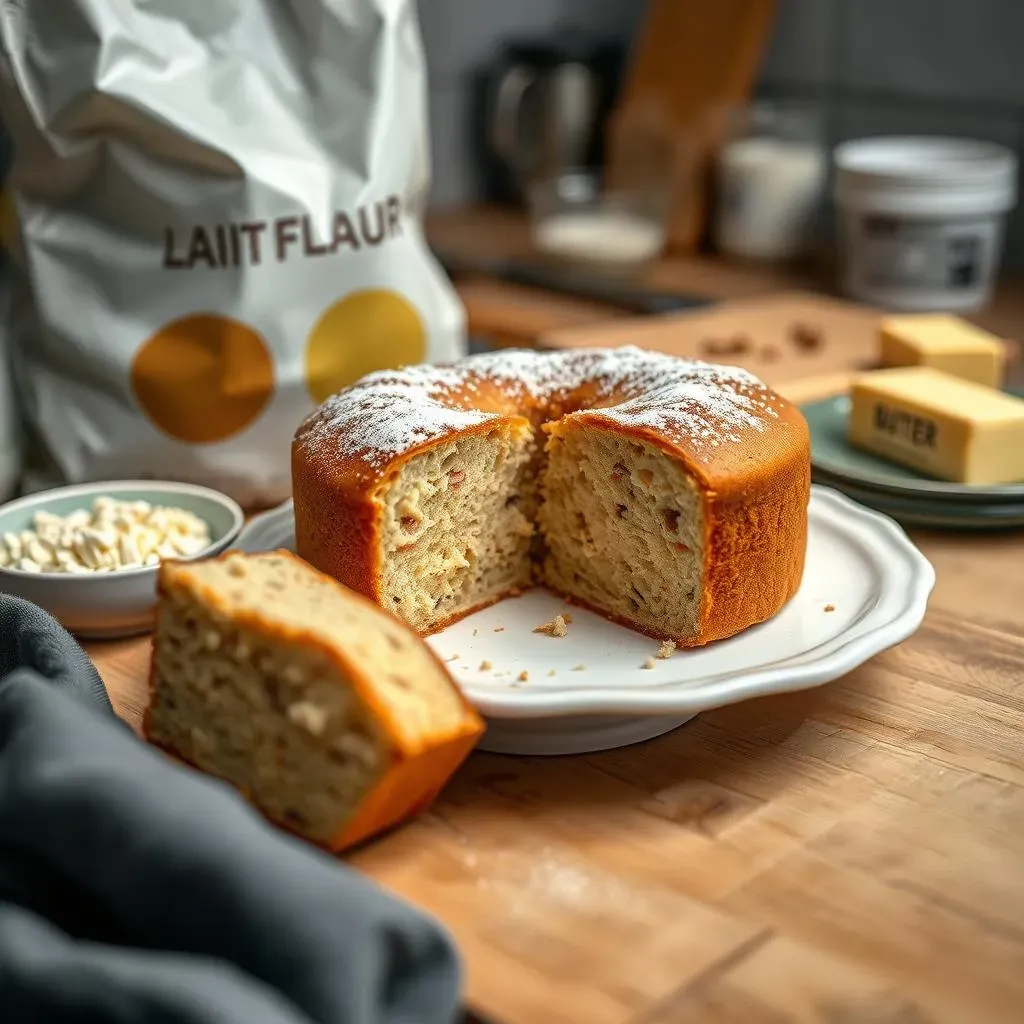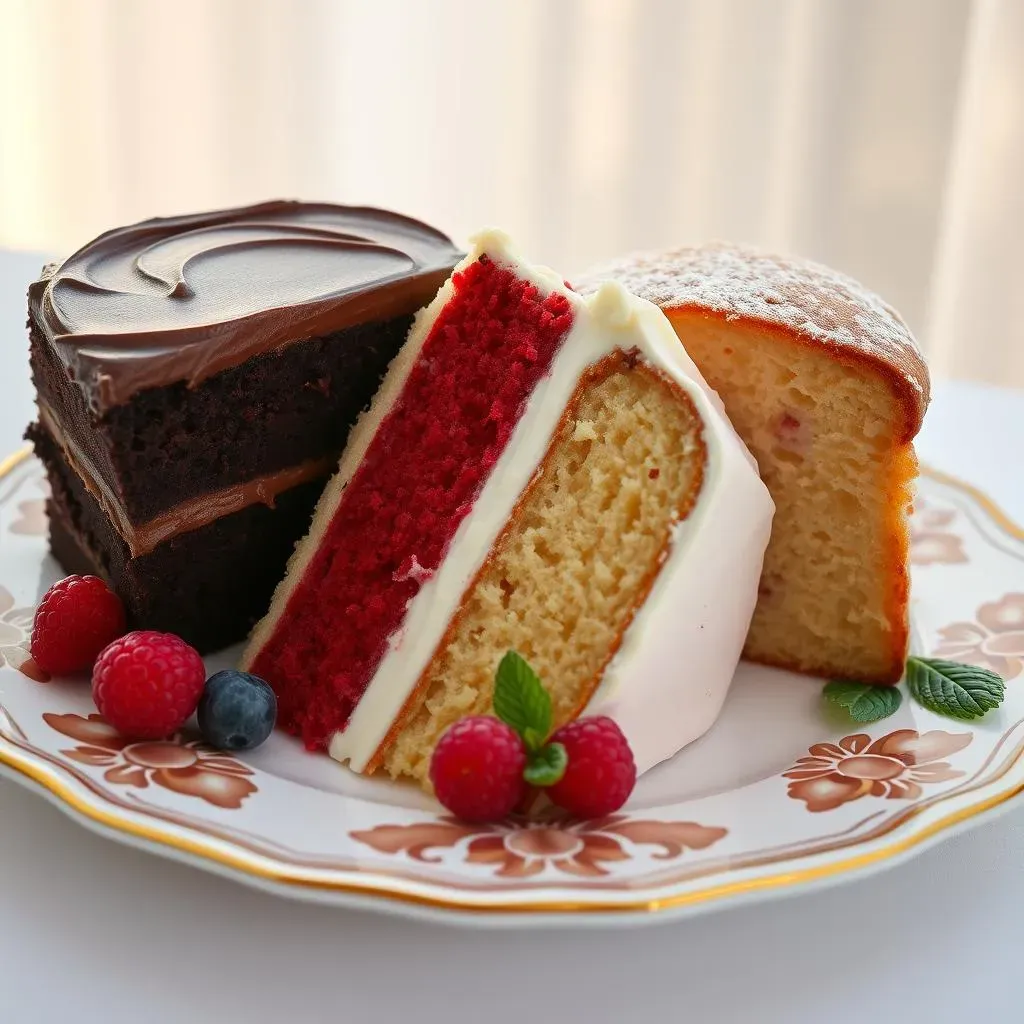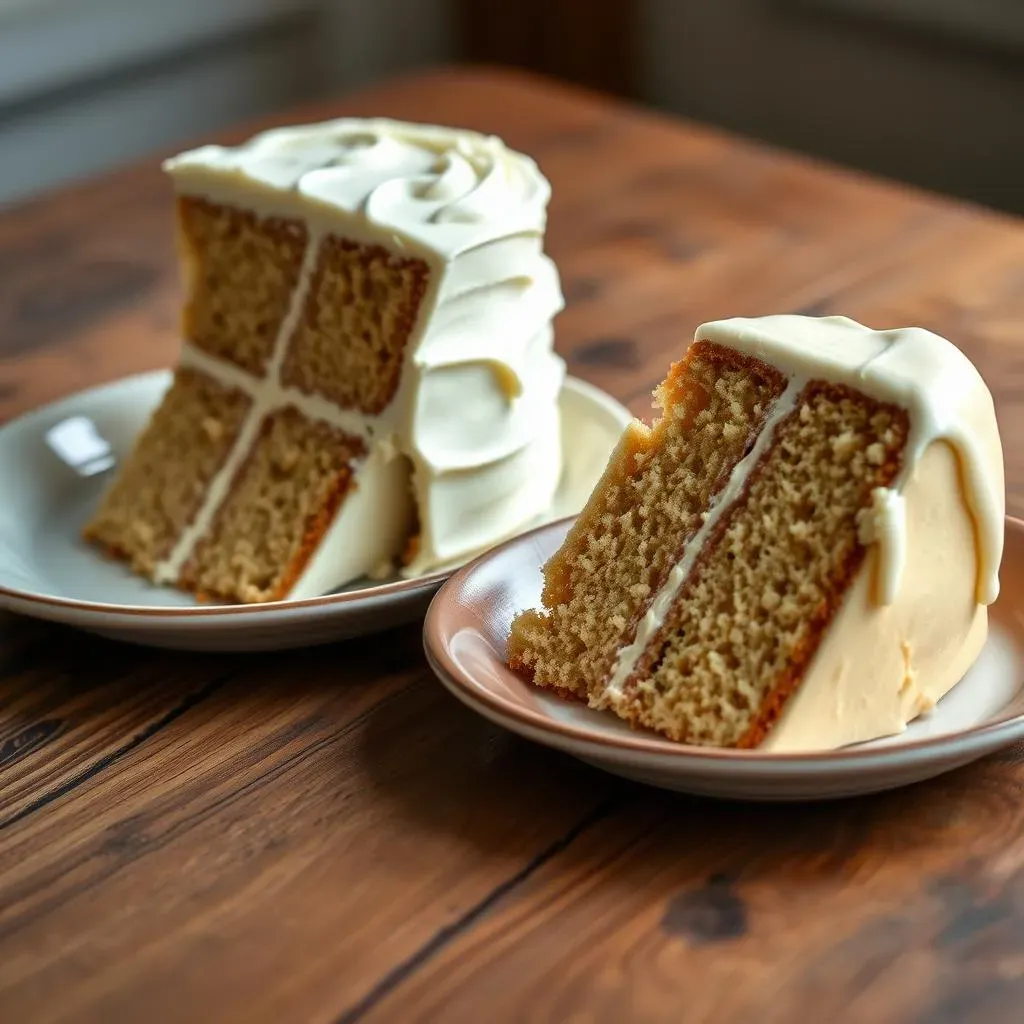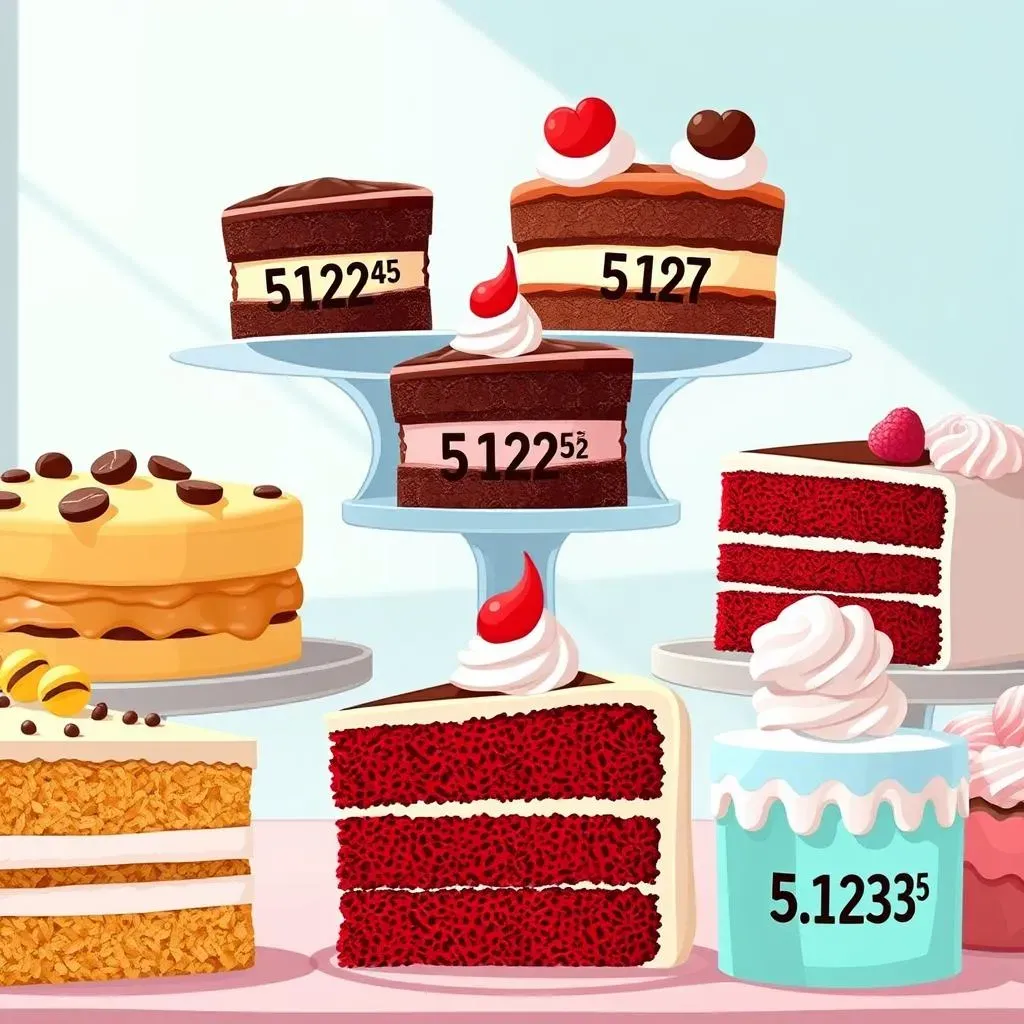Table of Contents
Ever wondered which cake could send your calorie counter soaring? We're diving headfirst into the delicious, yet sometimes daunting, world of cake calories! This article tackles the burning question: "which cake has the most calories?" We'll explore the science behind those sugary delights, examining how different ingredients contribute to the overall calorie count. Get ready to compare popular cake types – from classic chocolate fudge to decadent red velvet – and discover which ones pack the biggest caloric punch. But it’s not just about the type of cake; we’ll also uncover how factors like frosting, size, and even the bakery can significantly impact the calorie content of your sweet treat. By the end, you'll have a much clearer understanding of what makes a cake a calorie powerhouse, and how to make informed choices when indulging in your favorite dessert. So, grab your fork (and maybe a calculator!), and let's get started on this sweet and informative journey!
The Science of Cake Calories: Ingredients and Their Impact
The Science of Cake Calories: Ingredients and Their Impact
Flour Power (and its Caloric Contribution)
Let's start with the basics: flour. Different types of flour – all-purpose, cake flour, whole wheat – have varying calorie counts. Cake flour, for instance, is often lower in protein than all-purpose, resulting in a lighter, fluffier texture, but it still contributes significantly to the cake's overall calorie load. Think of it as the foundation of your cake's structure, and a hefty contributor to its calorie count. A single cup of all-purpose flour packs around 455 calories. That’s a lot of energy before we even add the sugar!
Then there's sugar. Oh, sweet, sweet sugar. It's the star of the show for many cakes, providing that delightful sweetness and acting as a binding agent. However, sugar is practically pure calories. Granulated sugar, for example, is almost entirely carbohydrates, providing 4 calories per gram. A typical cake recipe often calls for a cup or more of sugar, rapidly increasing the calorie count. It's a delicious culprit, though, isn't it? Want to explore lower-carb options? Check out our guide on which cake has the lowest carbs.
Ingredient | Calories per Cup (approx.) |
|---|---|
All-Purpose Flour | 455 |
Granulated Sugar | 770 |
Butter | 1680 |
The Fat Factor: Butter, Oil, and More
Fats are another major player in the calorie game. Butter, often used in cakes for its rich flavor and texture, is incredibly calorie-dense, providing about 80 calories per tablespoon. Oils, while sometimes used as a healthier alternative (relatively speaking!), still contribute a significant number of calories. Consider that a cup of butter contains roughly 1680 calories. That's a lot of energy in a relatively small volume. Remember, fats provide more than double the calories of carbohydrates or protein. Want to try a keto alternative? Learn how to make a keto cake!
Beyond butter and oil, the type of frosting can dramatically alter the calorie count. A rich buttercream frosting, for example, is loaded with butter, sugar, and often other decadent additions. This can easily add hundreds of calories to a single slice, turning a moderately calorific cake into a calorie bomb. A simple glaze, on the other hand, will have significantly fewer calories. Thinking about your keto diet? Find out if keto cakes are healthy for you.
- Butter: High in saturated fat and calories
- Oils: Vary in calorie density depending on the type
- Frosting: Can significantly increase calorie count
Calorie Kings: Comparing Popular Cake Types
Calorie Kings: Comparing Popular Cake Types
Chocolate Cake: A Classic Contender
Let's start with the heavyweight champion of many a dessert table: chocolate cake. The richness comes from the cocoa powder, butter, and often, a generous helping of chocolate chips. A simple chocolate cake can easily clock in at 300-400 calories per slice, but add a rich chocolate frosting, and you're looking at a significantly higher number – potentially 500 calories or more per slice! It's the ultimate indulgence, but definitely one to savor in moderation.
The calorie count can vary wildly depending on the recipe. A denser, more intensely chocolatey cake will naturally have more calories than a lighter, airier version. Think of it like this: a fudgy brownie-like texture will always pack more of a punch than a spongey, less dense cake. Want to explore healthier alternatives? Check out our keto cakes guide!
Cake Type | Approximate Calories per Slice |
|---|---|
Simple Chocolate Cake | 300-400 |
Chocolate Cake with Frosting | 500+ |
Red Velvet's Rich Reputation
Red velvet cake, with its vibrant color and tangy cream cheese frosting, is another calorie heavyweight. The combination of butter, sugar, and cream cheese in both the cake and the frosting makes it a particularly calorific choice. A single slice can easily surpass 400 calories, and some versions, especially those with extra-thick frosting, could easily reach 600 calories or more. It's a beautiful cake, but it's not for the faint of heart (or the calorie-conscious!).
The intense flavor comes at a cost, and that cost is often measured in calories. The creamy texture, provided by the butter and cream cheese, is also a major contributor to the high calorie content. If you're watching your calorie intake, you might want to consider a smaller portion or opt for a lighter frosting. Interested in lower-carb options? See our guide on low-carb cakes.
- Butter: A significant source of calories
- Cream Cheese Frosting: Adds considerable calories
- Sugar: A major contributor to the overall calorie count
Pound Cake: A Dense Delight
Pound cake gets its name from its traditional recipe: one pound each of butter, sugar, eggs, and flour. This recipe alone hints at its high calorie density. The high butter content, combined with the substantial amounts of sugar and flour, makes it one of the most calorie-dense cakes. Expect a single slice to contain anywhere from 400-500 calories, depending on the size and recipe variations. It's a rich, decadent treat, best enjoyed in small portions.
The dense, moist texture of pound cake is a direct result of its high fat and sugar content. This density translates directly to a high calorie count. While delicious, it's a cake best enjoyed sparingly if you're monitoring your calorie intake. Thinking about making a lighter version? Discover our tips on making low-carb cakes.
"A slice of pound cake is a small indulgence, but a whole pound cake is a commitment."
Beyond the Slice: Factors Affecting Calorie Count
Beyond the Slice: Factors Affecting Calorie Count
Slice Size Matters: A Bigger Piece, More Calories
Let's be honest, cake is best enjoyed in generous portions. But that generous slice comes with a higher calorie count. A larger piece of cake naturally contains more of everything – more flour, more sugar, more butter, and more frosting. This directly translates to a larger number of calories. Think of it like this: a single, small slice might be around 300 calories, while a double-sized slice could easily be 600 calories.
Portion control is key when you're trying to manage your calorie intake. A smaller slice allows you to enjoy the indulgence without the guilt (or the calorie overload). Want to make sure you're not overdoing it? Use a food scale to measure your portions accurately. For more tips on mindful eating, check out our guide on what happens if you eat cake on keto.
Slice Size | Approximate Calorie Increase |
|---|---|
Small Slice | 300 calories (approx.) |
Large Slice (Double) | 600 calories (approx.) |
Frosting Frenzy: The Creamy Calorie Culprit
Frosting is where things can get really interesting (and calorically intense). Different frostings have drastically different calorie counts. A simple glaze adds minimal calories, while a rich buttercream frosting, packed with butter and sugar, can easily add several hundred calories to a single slice. Think of it as the icing on the cake – literally and figuratively – when it comes to calories.
Choosing a lighter frosting, like a whipped cream or a fruit-based glaze, can significantly reduce the overall calorie count. Even a simple powdered sugar dusting can cut down on calories compared to a heavy buttercream. If you're looking for keto-friendly options, check out our post on does keto cake taste good?
- Buttercream: High in calories due to butter and sugar
- Cream Cheese Frosting: Also high in calories and fat
- Glaze: Relatively low in calories
Bakery vs. Homemade: A Calorie Comparison
Homemade cakes often have a reputation for being healthier, but that’s not always true. While you have more control over ingredients, homemade cakes can still be very high in calories. Bakery cakes, on the other hand, often use commercial ingredients that can be even more calorie-dense. They also tend to be larger, further contributing to the calorie count. It's a tough call!
The best approach is to carefully check the nutritional information if available. If you're baking at home, you can make healthier substitutions to reduce the calorie count, such as using less sugar or oil. For some healthy baking inspiration, you might find our guide on 3-ingredient keto cakes helpful.
"The best cake is the one you enjoy responsibly."
